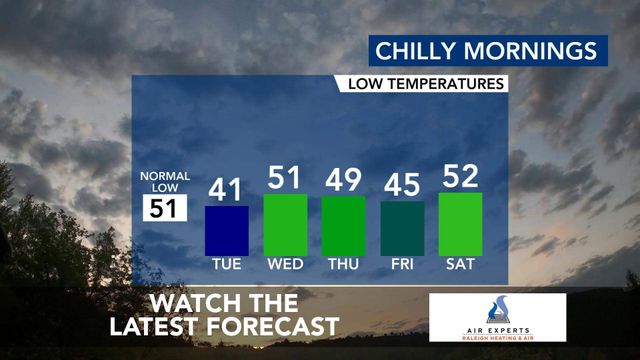Winter of discontent: High and dry season brought NC warmer temps, less rain
It's been unseasonably warm and dry for much of the United States as winter "underperformed," according to a recently released report.
The National Oceanic and Atmospheric Administration's climate report showed this was the nation’s 12th-driest winter in 128 years of record keeping.
NOAA released its report for the country this week, showing that much of the country had mean temperature percentiles that were above average or even much above average from December through February. No states were ranked below average.

For North Carolina, practically the entire state was above average. In December, there were 12 days with highs of at least 70 degrees. The average is only two to three with the record being 11 in 2015.
From December through February, the average temperature in the U.S. was 34.8 degrees, 2.5 degrees above average.
In January, North Carolina saw at least a trace of snowfall on five different days, making our total at RDU 2.7 inches, close to normal for the month.
In February, we saw eight days at RDU with highs in the 70s.

"It ranked third over the last 10 years and made for a warm feel to the month," said WRAL meteorologist Elizabeth Gardner.
There was a three-week stretch in January where things got really hectic. Most of the area experienced snow three weekends in a row.
Nationally, the worst of the winter occurred when a huge winter storm ranging from Texas to Maine brought snow, ice and freezing rain along with bitterly cold temperatures during the first week of February.
As far as precipitation, North Carolina trended from below average to average. RDU was more than an inch below normal for February.

"Our precipitation at RDU was almost an inch and a half below normal but our drought situation is still okay," Gardner said. "Because in January our rainfall was more than two-and-a-half inches above normal."
The average rate of precipitation for February for the contiguous U.S. was 1.73 inches, 0.40 of an inch below average. That figure ranks in the driest third of the historical climate record. For the winter, the precipitation total was 5.76 inches, around an inch below average.
Serious drought conditions are most apparent in the western U.S., where at least 74% of the northwest is experiencing critical water shortages.
Metrological spring began on March 1, while the first day of spring is March 20. Don't get too excited for spring just yet, as temperatures are expected to drop into the 20s on Sunday morning.









